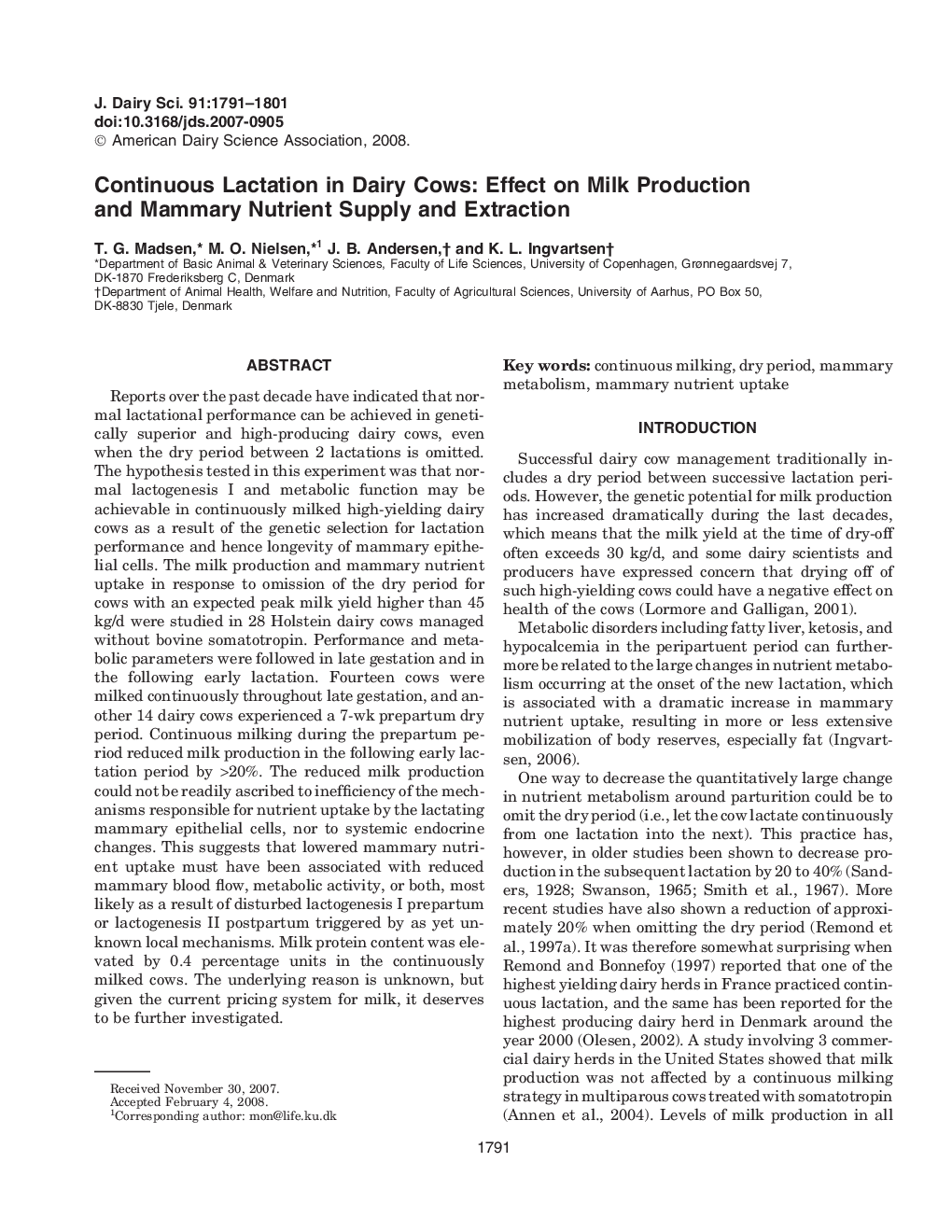| Article ID | Journal | Published Year | Pages | File Type |
|---|---|---|---|---|
| 2439214 | Journal of Dairy Science | 2008 | 11 Pages |
Reports over the past decade have indicated that normal lactational performance can be achieved in genetically superior and high-producing dairy cows, even when the dry period between 2 lactations is omitted. The hypothesis tested in this experiment was that normal lactogenesis I and metabolic function may be achievable in continuously milked high-yielding dairy cows as a result of the genetic selection for lactation performance and hence longevity of mammary epithelial cells. The milk production and mammary nutrient uptake in response to omission of the dry period for cows with an expected peak milk yield higher than 45 kg/d were studied in 28 Holstein dairy cows managed without bovine somatotropin. Performance and metabolic parameters were followed in late gestation and in the following early lactation. Fourteen cows were milked continuously throughout late gestation, and another 14 dairy cows experienced a 7-wk prepartum dry period. Continuous milking during the prepartum period reduced milk production in the following early lactation period by >20%. The reduced milk production could not be readily ascribed to inefficiency of the mechanisms responsible for nutrient uptake by the lactating mammary epithelial cells, nor to systemic endocrine changes. This suggests that lowered mammary nutrient uptake must have been associated with reduced mammary blood flow, metabolic activity, or both, most likely as a result of disturbed lactogenesis I prepartum or lactogenesis II postpartum triggered by as yet unknown local mechanisms. Milk protein content was elevated by 0.4 percentage units in the continuously milked cows. The underlying reason is unknown, but given the current pricing system for milk, it deserves to be further investigated.
